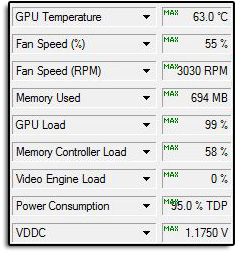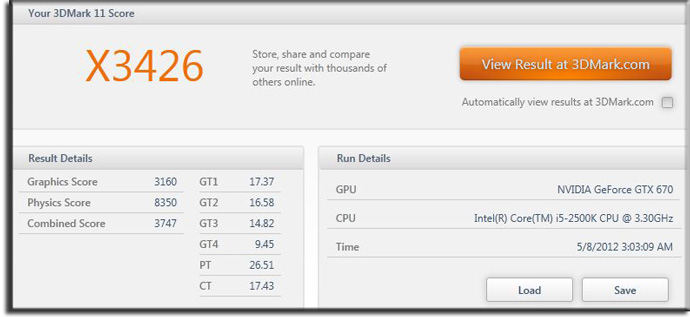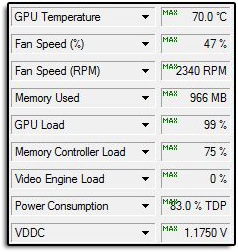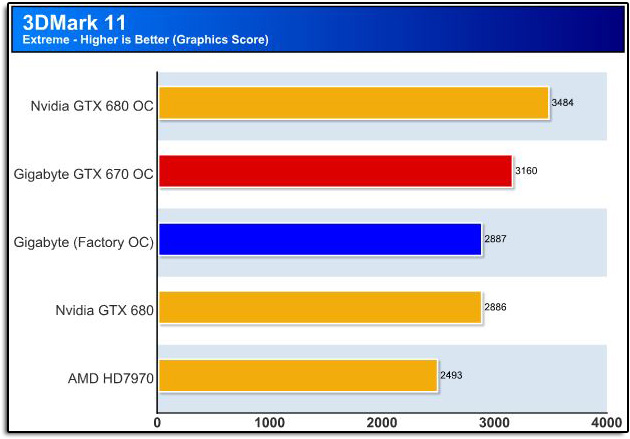Overclocking

With the Kepler architecture, the GTX 670 utilizes Nvidia’s GPU Boost. Under a load the stock 980MHz core can reach speeds as high as 1200MHz on this factory overclocked card when operating conditions are optimal, including the temperature and power consumption.
For discovering the highest overclock EVGA’s Precision X Overclocking utility was accompanied with the Unigine Heaven 3.0 benchmark (running windowed in a loop). In addition TechPowerUp’s GPU-Z was used to poll the vital stats (such as temperature load and power consumption). The GPU and the memory cores were incrementally pushed up until artifacts started to show in the benchmark (or the whole system was dumped to the desktop) and then backed off until the video card was stable for a few minutes. Then 3DMark 11 on Extreme was run three times and averaged to get a fresh overclocked graphics score.

| With a 240MHz overclock beyond the 1200MHz GPU Boost, the card has a decent 17% overclock (or a 32% over base speed). The memory was a little finicky but settled in at an additional 364MHz. Even under a full 95% TDP load, the fans (with a deep howl at 55% speed) managed to keep the card way under maximum heat specs. The GTX 670 OC is very power hungry, drawing 388W at full load. This explains the need for the 6+8-pin power adapters instead of the standard 6+6-pin found on the standard GTX 670 and the GTX 680. The charts including this information is on the following page under Power Consumption. |  |
Only the top three cards are being compared now with the overclocking results. A 9% lead increase in graphics score now separates the GIGABYTE GPU from the NVIDIA GTX 680 reference card. This positions it perfectly in the middle with the GTX 680 OC also having an equal 9% lead.


To measure the temperature of the GIGABYTE GTX 670 OC, GPU-Z was used in the background while Metro 2033 ran in a benchmark loop for 10 minutes. The highest temperature was recorded and then the computer sat for another 10 minutes (after which the idle temperature was recorded). These tests only include the NVIDIA line-up due to the similar nature of the architectures and power requirements.

| GIGABYTE’s card shows slightly higher idle temps then the Nvidia reference boards; however, the fan speed is reduced probably due to the three fan configuration. These cards can reach a peak of 80-83 degrees Celsius before it reaches critical mass, so at 70 degrees with a full load gives it a lot of wiggle room (at default speeds).GPU-Z shows the card under full load with a fan speed of 47% (this is the default ceiling lock limit). At this speed the video card is barely audible over the CPU and case chassis fans. When the fan parameters are manually controlled via Precision X, anything above 50% becomes quite loud, and at 100% the Windforce 3Xbecomes such a hurricane only a madman could endure (about the same loudness as a vacuum cleaner).Do note that our NVIDIA GTX 680 OC results were tested at a 85% fan speed. |  |
Power Consumption

For power readings a Kill-A-Watt measurement device took the idle readings at the desktop for 15 minutes. Then the Metro 2033 benchmark was run for 10 minutes and the highest power usage was recorded. Under the largest overclocking load GIGABYTE’s card draws 1 watt more then the reference GTX680 reference card. All of the cards hover within 2% power draw of each other at idle speeds. Uncannily enough, with this entire review the GTX 670 OC has consistently jousted the GTX 680 by one point in a graphics score, one frame per second, and now one watt.
 Bjorn3D.com Bjorn3d.com – Satisfying Your Daily Tech Cravings Since 1996
Bjorn3D.com Bjorn3d.com – Satisfying Your Daily Tech Cravings Since 1996









I don’t notice the fan being to loud with in an inclosed case til around 65%, but the cooler is so good mine rarely ever gets to 50%. Hottest my card gets i 70-75c and that is with +60mhz OC so 1260mhz with boost and ram is overclocked from 6ghz to 7.2ghz.